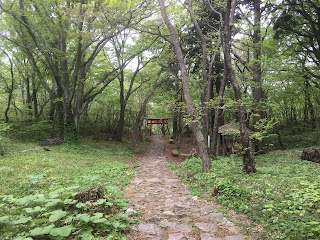Today Japan had national elections for the Upper House. They were critical elections because the Liberal Democratic Party - who are anything but liberal or democratic - already has a "super majority" in the lower house. A super majority - 2/3 - in the upper house will mean that the Constitution can be amended by a referendum that needs only 50% approval. The goal of PM Abe is to amend the consitution to allow Japan to re militarize and participate in wars of aggression.
In the second Gulf War, Japan was constrained by its constitution and sent support troops rather than fighting troops. Even though the Chilcot report was released only a few days ago, there seems to have been almost nothing connecting it to the fact that had Japan had a Constitution that was already amended, Japanese troops would also have been fighting in an immoral and illegal war.
The other day I was in Azabujuban train station - probably the nearest station to the Korean embassy. The Cabinet office has seen fit to put up a propaganda poster - using my tax money, despite the fact I can't vote against them - demarcating as Japanese, all Japan's contested territories. When you look at Takeshima a few bare rocks (which Korea has a stronger historical claim to) it's pretty hard to imagine justifying a war over who who owns them... Although, Japan has a stronger historical claim to the Senkaku than China, they are indisputably very far from the Japanese mainland. And yet, all Japan's territorial disputes are now included in Japanese school textbooks, not as contested territories, but as Japan asserting its right to the territories.
This week, the LDP has put out a page on its website. "Dob in teachers who are not politically neutral". They give as an example saying that changing the constitution will mean sending Japanese to war is not neutral. Looking at different opinions - otherwise known as source base history - is not neutral. My history teaching is not neutral - I ask students to think for themselves... I don't tell them what to think.
The government is duplicitous. They want it both ways. They say they want to foster international "human resources", but it needs to be in the context of instilling Japaneseness. They want critical thinking - but not criticism the government or the status quo. They want tourists from China and Korea and yet insist that the Nanjing Massacre and the stories of comfort women are fabrication.
The reports tonight are that young people voted right. And I can believe it. Not because the young people are fascist, but because they have no political structure to put information in. They are indulged with saccharin nationalism. Textbooks with morally superior nonsense like the world admires Japan because Japanese are polite and have good manners and are restrained... Japan is benevolent and helps the poor children in African and India who are too incapable of helping themselves. And this in itself need not be nationalistic saccharin, except it is because it's seen as being something that comes with the Japanese DNA, not something that it actively promoted and reinforced by conscious decisions in society. There are lots of great things about Japan, but asserting that they are great, because this is the consciousness of Japan gives rise to an indulged sense of wanting one's country - and by extension oneself - to be flattered.
I am dismayed, utterly dismayed. Looking at America - more guns doesn't equal more peace. Why on earth do the Japanese people - who are extremely anti gun - think that more weapons will bring them greater peace....
It's a very sad day for Japan.




















